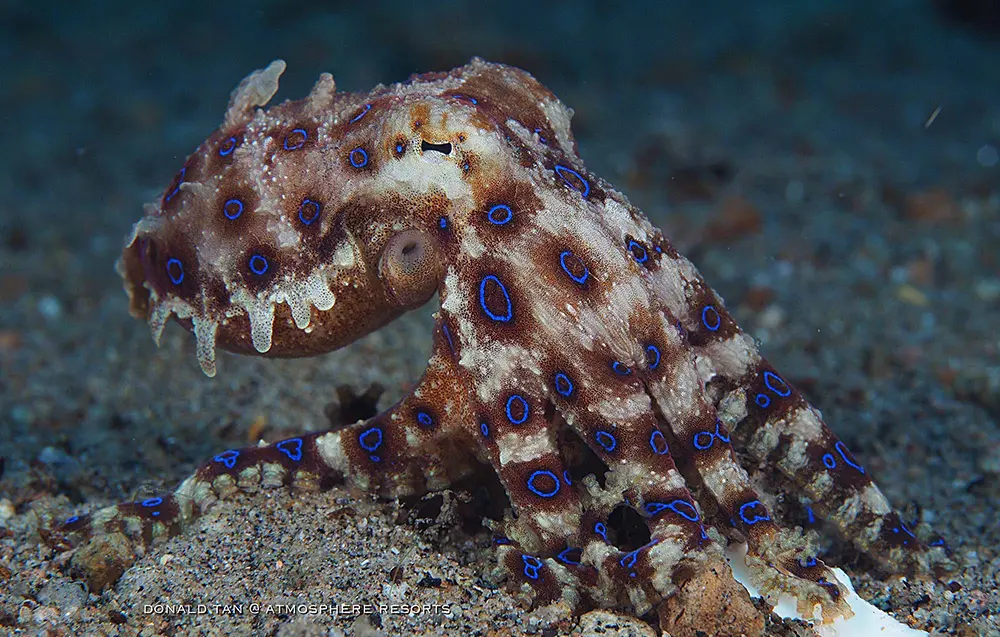I’ve been Atmosphere Resorts & Spa’s marine conservation biologist for 14 months now and I dive regularly. In fact, it’s unusual to see me with dry hair. Coming from a coral reef and megafauna (the BIG stuff) background, many of our critters I’ve excitedly encountered for the first time. However, there is one particular little 8-armed guy that I have yet to set my eyes on – the elusive (I recon “mythical”) greater blue-ringed octopus.
Octopus can pop up at many of our dive sites. However, we have one particular site which, at certain times of the year, is your best bet for encountering several species of octopus (including the flashy blue one). 14 months in, it has now become a running joke in the dive centre that I am a bad luck charm when it comes to finding a blue-ring. Literally, they’ll see one. The next day I’ll join the dive, back to the same site, we don’t see it. The day after they go without me, they see it. I join the following day, and yep, you guessed it – we don’t. (I apologise reader, if you have been on one of these fruitless dives with me.)

The blue-ringed octopus – small but mighty
In their absence, I’ve been reading up on them – they are incredible little critters. The greater blue-ringed octopus is the smallest of 4 species, maxing out at just 2 3/4 inches. These tiny cephalopods certainly pack a big punch. A bite from a blue-ring could kill up to 26 people in one go! Produced by their salivary glands, the venom is tetrodotoxin – a neurotoxin also found in pufferfish. Depending on the dose you’re subjected too, the victim can develop numbness, difficulty in swallowing and muscle paralysis. As the heart is a key muscular organ, unless CPR is administered pretty quickly you’re going to be in trouble. Although there have been very few cases of these guys harming us, they’re definitely worth admiring from a distance.
The blue-ringed flash dance
When chilling out on the reef, blue-rings keep themselves to themselves by camouflaging into the sediment around them. However, when disturbed they put on a fascinating display. Up to 60 small, blue rings cover the body and flash at up to 3 flashes a second. The rings are actually patches of specialised cells called iridophores which reflect light in the form of iridescent colours. The rapid flashing is created by muscles contracting and relaxing areas of skin around the rings.

Challenges of finding a mate for the blue-ringed octopus
An interesting study I came across, with a comical outcome, took place back in 2000. Researchers placed several male and female blue-rings into an aquarium to observe their courtship and mating behaviour. It turned out, males didn’t seem to be able to figure out who they should be mating with until it was a little late. Putting their adapted mating arm (or their hectocotylus) into the mantle cavity of any other individual, only to realise (in some cases) they’d just been trying to mate with another male and quickly retreating!
Critters of Dauin
If you’d like to find out more about octopus, or any of our incredible critters, check out our new PADI Critters of Dauin specialty when you’re here! In the meantime, the hunt for the blue-ring will continue… watch this space!
Big thanks to Don & Dan for the photos used here, as I (obviously) don’t have any yet!.






